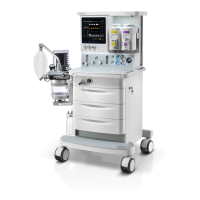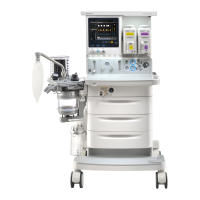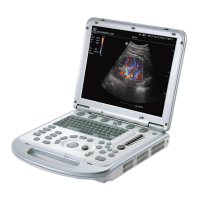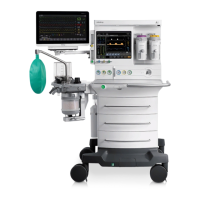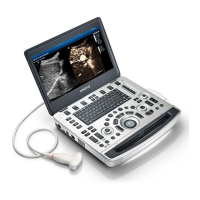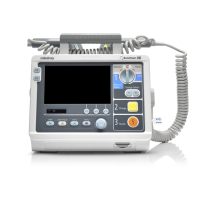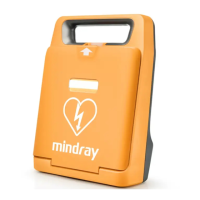8-1
8 CO2 Monitoring
8.1 Introduction
CO
2
monitoring is a continuous, non-invasive technique for determining the concentration of
CO
2
in the patient’ airway by measuring the absorption of infrared (IR) light of specific
wavelengths. The CO
2
has its own absorption characteristic and the amount of light passing
the gas probe depends on the concentration of the measured CO
2.
When a specific band of IR
light is passed through respiratory gas samples, some of IR light will be absorbed by the CO
2
molecules. The amount of IR light transmitted after it has been passed through the respiratory
gas sample is measured with a photodetector. From the amount of IR light measured, the
concentration of CO
2
is calculated.
There are two methods for measuring CO
2
in the patient’s airway:
1. Mainstream measurement
Uses a CO
2
sensor attached to an airway adapter directly inserted into the patient’s
breathing system.
2. Sidestream/microstream measurement
Samples expired patient gas at a constant sample flow from the patient’s airway and
analyzes it with a CO
2
sensor built into the CO
2
module.
The measurement provides:
1. CO
2
waveform.
2. End-tidal CO
2
(EtCO
2
) value: the CO
2
value measured at the end of the expiration
phase.
3. Fraction of inspired CO
2
(FiCO
2
): the CO
2
value measured during inspiration.
NOTE
z Perform CO
2
monitoring when using this anesthesia machine to ensure patient
safety. If your anesthesia machine is not configured with CO
2
module, use the
anesthesia machine with
CO
2
monitoring function in compliance with the relevant
international standard to perform CO
2
monitoring.
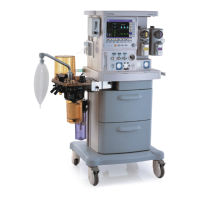
